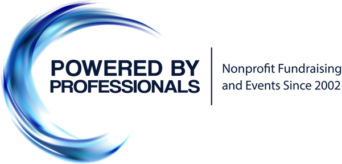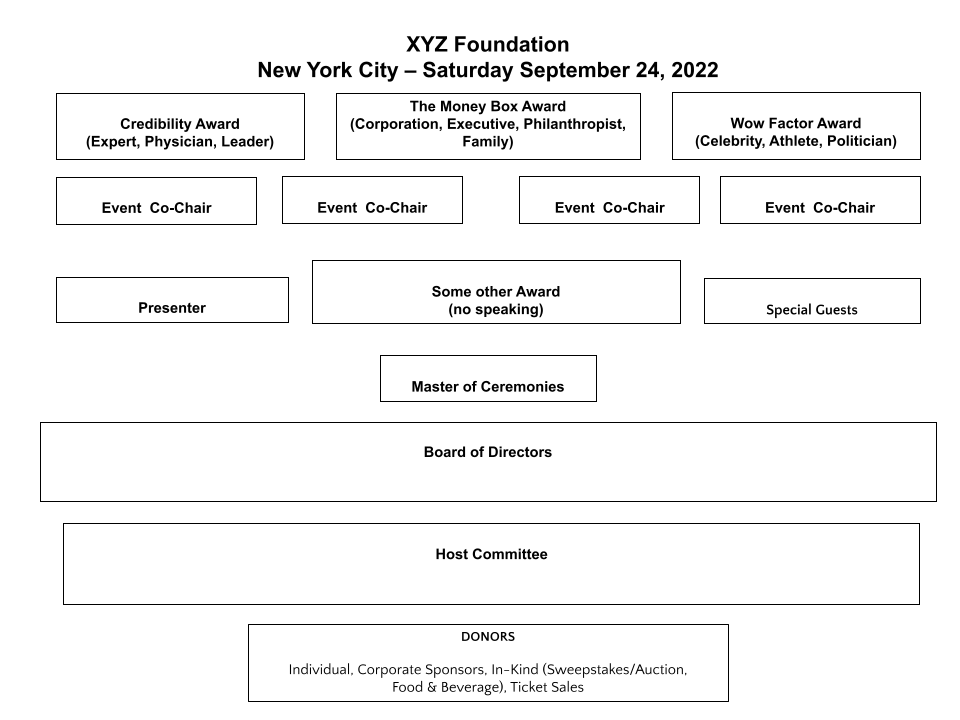Over the years nonprofits have struggled to figure out how to grow their fundraising events. Some organizations have been successful, and others have found it difficult to get the right people involved. Powered by Professionals follows a process that enables us to increase our chances for success by leveraging an organizational chart for each event we work on. Let me show you how we do it.
The first step in creating an organizational chart is to determine the structure of your program and then creating the framework for that structure. There are three categories we think should be considered when identifying honorees:
A. Credibility – identifying someone who further solidifies your expertise in an area and by recognizing them further enhances the perception of the organization. Make every attempt to choose a leader in their field (ex. if your organization is health-related – possibly a leading physician that cares for patients, a top surgeon, or a researcher.)
B. The Money Box – this person needs to have the ability to raise funds. It could be a company, leading executive, influential family, philanthropist and or an incredibly well- networked individual. Having a connection to your organization/mission is a plus, but not always a must. Having a clear detailed conversation with the potential honoree and laying out what the expectations are is essential to the success of your fundraising event.
C. Wow Factor – this person brings immediate exposure to your organization and is not expected to raise funds (although it would be a bonus.) By this person committing to be a part of the event, the organization can further market the event and/or leverage this individual to raise funds and most importantly, raise awareness of the organization through the media or an industry.
The most important task is to give people clear roles in the event, so they feel connected and responsible for the success of your event. After identifying the honorees, one of their responsibilities should be to help identify additional people to get involved and play a role in the event, in many cases as Co-Chairs. This enables the organization to get to people they otherwise would not have a way to approach to become part of the fundraising team because a close contact of theirs is being honored. In some cases, the Co-Chairs can drive more fundraising than the honorees. This is a crucial part of the fundraising success of an event. These Co-Chairs can be considered as possible honorees or board members in the years to come, helping the organization continue to build a pipeline of strong supporters.

